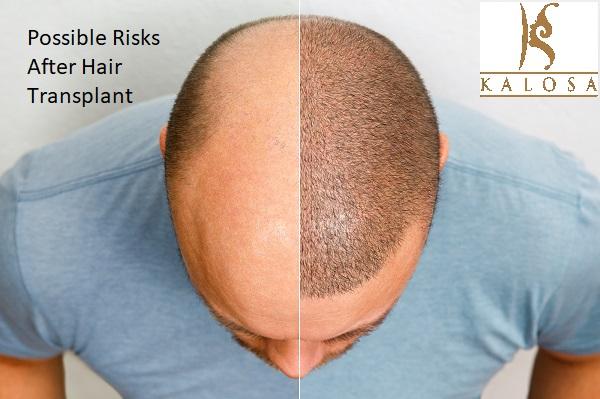Many people are seeking hair transplant as a solution to achieve thicker hair. However, as the popularity of this procedure grows, there is increasing awareness about the potential risks and side effects that come with it.
In this article, our goal is to discuss and provide information about the potential side effects of hair transplant surgery. We will also offer some guidance on how to manage these side effects effectively.
Understanding How Hair Transplantation Works
Hair transplantation is a surgical procedure conducted in private clinics by specialized physicians and medical staff. The procedure involves using local anesthesia and may cause minor bleeding, which raises concerns about potential risks, specifically the risk of infection.
Common Side Effects
Scarring is the most common side effect experienced after hair transplant surgery. In addition, there may be other side effects that are commonly seen, such as:
Possible Infections: One of the potential risks after undergoing a hair transplant surgery is the occurrence of infections. Several factors, including suitability for surgery, post operative care, and scalp trauma, can increase this risk.
Formation of Pus: Pus may develop in crustal areas at the surgical site.
Inflammation of Hair Follicles: When hair follicles become inflamed, patients may experience various symptoms such as discomfort, redness, swelling, and itching in the affected areas of the scalp.
Bleeding and Loss of Sensation: Some patients may notice bleeding and a temporary loss of sensation in the scalp.
Addressing Misconceptions
It is important to clarify that severe health issues such as brain damage or cancer resulting from hair transplantation are not supported by research or clinical experience. Like many surgical procedures conducted in sterile environments, hair transplant surgeries carry minimal risks.
Long-Term Side Effects
While some side effects are temporary and easily managed, long term side effects may occur. These include:
Environmental Hair Loss: Damage to surrounding hair follicles or improperly placed transplanted hair follicles can lead to hair loss in adjacent areas.
Misdirection of Hair Growth: Hair may grow in the wrong direction due to faulty transplantation techniques, presenting a long-term side effect.
Minimizing the Risk of Infection
To minimize the risks associated with hair transplant surgery, it’s crucial to take steps to prevent infection. This includes following proper post operative care instructions and taking any prescribed antibiotics as directed by your surgeon. Additionally, maintaining diligent hair care practices can help enhance the effectiveness of the transplant procedure.
Choosing the Right Doctor and Clinic
The primary step in mitigating potential side effects is selecting a skilled hair transplant surgeon and a reputable clinic. By following the surgeon’s instructions in the initial post operative week, the risk of infection can be significantly reduced, ultimately improving the outcome of the hair transplant.
Differences in Side Effects in Male and Female
The side effects experienced by both men and women after hair transplant surgery are generally similar. However, some gender specific considerations exist:
Hair Transplantation Side Effects for Women: Hair transplantation in women is typically performed in a single session lasting one to two hours. Women can typically return home after the procedure and manage their aftercare independently. Short term side effects may include slight swelling, redness, and crusting on the scalp, which are normal signs of healing.
Hair Transplantation Side Effects for Men: Men may experience similar side effects, including redness and crusting, in the days immediately following the procedure. Proper care can address these issues. However, if hair growth is sparse or occurs at an improper angle, it may indicate an incorrect transplant, necessitating further intervention.
Conclusion
Hair transplant surgery is a reliable solution for hair loss, but it’s important to be aware of potential side effects. By understanding these risks, seeking the right medical expertise, and following post operative care instructions, you can minimize complications.
It’s important to note that hair transplantation is generally a safe procedure, and any temporary discomfort is normal. However, it’s always recommended to consult with a qualified medical professional before asking for hair transplant cost. They can address any concerns you may have and help you make an informed decision about your course of treatment.



